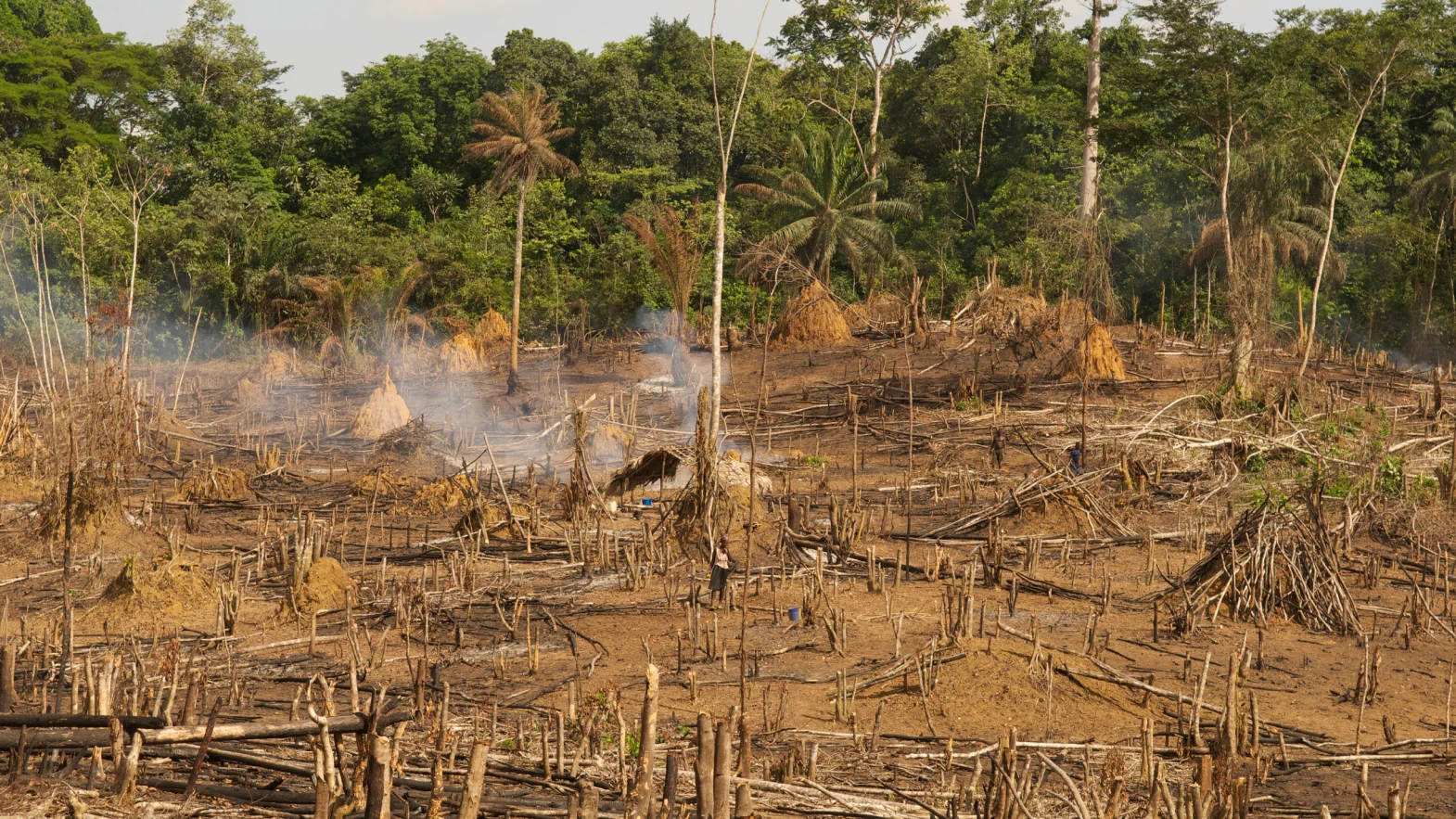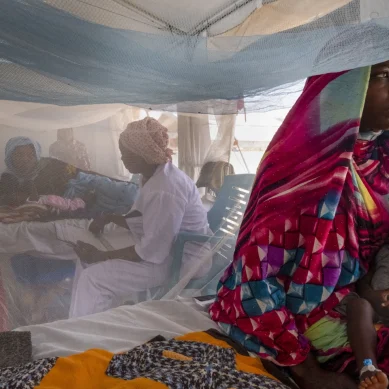
In mid-December 2021, the World Health Organization (WHO) officially certified the end of the Ebola outbreak that had affected residents of the Beni Health Zone in North Kivu Province, Democratic Republic of Congo.
The declaration was made in accordance with WHO recommendations, 42 days after the second negative test of the last confirmed case. The WHO reported a total of 11 cases (eight confirmed and three probable), of whom only two survived. Of the nine deaths, seven were in the community and two occurred at the Ebola Treatment Centre.
Vaccination and prompt public health responses had crucial roles in ensuring that this outbreak saw fewer cases than did previous Ebola outbreaks. But despite a lower case count some researchers are frustrated at a perceived inability to take the required actions needed to stop the spread of zoonotic diseases such as those caused by the related Ebola and Marburg viruses.
These filoviruses have their reservoir in bats and will continue to pose a risk to the region unless a preventative, One Health approach is taken, say the researchers. With the world more highly connected than ever before, a health threat in the Congolese jungle could quickly pose a major threat to global health. Any emerging infection is not just a local phenomenon but is of potential global importance.
Parrot’s Beak is a curved strip of land in Guinea, between the Meli River and Mokona River, that juts into Sierra Leone, just north of the country’s border with Liberia.
Parrot’s Beak is home to colonies of fruit bats that harbour Marburg virus, a relative of Ebola virus. Humans come in close proximity to the bats, which results in humans catching the virus and then transmitting Marburg to others via bodily fluids.
Fruit bats live in forests, but these are shrinking. More than 20 years before Guinea recorded the region’s first case of Marburg, the United Nations Environment Programme warned that the unique forests of the region had dramatically diminished over the past few decades, as civil war in Sierra Leone and Liberia pushed thousands of refugees into Parrot’s Beak.
Parrot’s Beak was covered with deep green forests in 1974, but civil wars pushed refugees into the area. By 1999, much of the forest had been cut down for housing, charcoal and agriculture.
“People have cut down the forests for housing materials, wood for charcoal and space to grow crops. Some commercial logging also played a role,” a NASA report notes.
The United Nations Environment Programme has attributed the disruption of the Parrot’s Beak ecosystem to newcomers creating their own family plots, which merged with existing areas of deforestation.
With the population of Parrot’s Beak continuing to grow, residents have become increasingly dependent on the environment for their livelihoods, such as farming. Increasing use of agriculture increases deforestation, which puts residents in closer proximity to wildlife, including bats, which in turn increases the risk of zoonotic diseases such as Ebola and Marburg.
There is already an approach to the nexus of environmental, animal and human health: One Health. The WHO describes One Health as designing and implementing programmes, policies, legislation and research in which multiple sectors communicate and work together to achieve better public health outcomes.
“The areas of work in which a One Health approach is particularly relevant include food safety, the control of zoonoses, and combating antibiotic resistance,” says the WHO in a Q&A on the topic.
Disrupting the interactions between the environment, animals and humans that increase the risk of emerging infectious diseases could have far-reaching effects. But actions to achieve a One Health approach, such as wildlife surveillance, are prioritized below vaccination, which some public health officials argue is a short-term approach.
A One Health approach is especially important in countries such as Guinea, Sierra Leone and Liberia, which border Parrot’s Beak, and where the WHO is concerned about the risk of emerging and re-emerging diseases.
In August 2021, when a suspected case of Ebola was identified in Côte d’Ivoire (Ivory Coast), the person was found to have traveled there by road from Guinea. Pierre Dimba, Minister of Health of Cote d’Ivoire, told Nature Medicine that the top priority was quickly rolling out the vaccine against Ebola via a ring-vaccination method. According to Dimba, the One Health approach needs to be better researched before full implementation is feasible.
“One Health is very relevant because we’re fighting different outbreaks at the same time. The interaction between wild animals and human beings gives rise to diseases like Ebola and Marburg. We have adopted a consultation approach and will review the report. We [however] need to accelerate research. We should have research at the local level to [be able to] anticipate this type of problem, and be able to react,” Dimba tells Nature Medicine.
1821–1902: Rudolf Virchow coins the term ‘zoonosis’ to describe an infectious disease that passes from animals to humans.
1964: Calvin Schwabe, a veterinary epidemiologist at University of California Davis, coins the term ‘One Medicine’ to describe similarities between human and veterinary medicine.
1976: First outbreak of Ebola virus in the Democratic Republic of Congo (formerly Zaire).
2004: The Manhattan Principles call for an international, interdisciplinary approach to prevent disease, which formed the basis for the One Health, One World concept.
2014: First outbreak of Ebola virus in West Africa, with 28,610 cases in Guinea, Liberia, and Sierra Leone.
2015: Outbreaks of H5N1 highly pathogenic influenza virus in poultry across West Africa.
2016: First epidemic of Rift Valley fever virus in humans and animals in Niger.
2021: Endorsement of an Animal Health Strategy for Africa.
In November 2019, the WHO paved the way, for the first time, for the use of a vaccine against Ebola in high-risk countries with the pre-qualification of rVSV-ZEBOV (Ervebo/Merck). The vaccine, based on a recombinant vesicular stomatitis virus that expresses the Ebola virus glycoprotein, is now a core pillar of Ebola preparedness and response in Africa.
Muhammed Afolabi, a researcher at the London School of Hygiene & Tropical Medicine, co-authored a study that proposed the rollout of vaccination against Ebola in Africa. Afolabi notes that although routine use of the vaccine against Ebola will improve compliance and ensure that people receive both doses, use of vaccines is more straightforward than attempting to disrupt disease transmission via the One Health approach.
“We’ve heard the story of how an Ebola outbreak once started with a child innocently playing with droppings from bats. He got sick and soon infected his entire family. That was how it quickly spread within the community and across countries — spreading from Guinea to Sierra Leone and from Sierra Leone to Liberia,” says Afolabi.
Because human behaviors are difficult to change, many activities that bring humans in the region in contact with wildlife reservoirs of diseases cannot be stopped easily, notes Afolabi.
“If you tell people don’t eat bats, they can argue that it is a delicacy they have been enjoying for ages. They will still do it. This is why vaccines will continue to be relevant in protecting people when they come in contact with the virus as a result of their activities and behaviors,” Afolabi tells Nature Medicine.
Daniela Manno, who has written on vaccines with Afolabi and is also at the London School of Hygiene & Tropical Medicine, argues that vaccination and One Health do not have to be mutually exclusive, and that countries in Africa can pursue both.
“The Ebola vaccine gives us a powerful tool to prevent outbreaks as prophylaxis in areas that are at risk of Ebola outbreaks. But we also need to look at why Ebola is coming back and the interactions between wildlife and human behavior. We probably have more things to understand about this virus. For me, the two things are actually working together in a way,” Manno tells Nature Medicine.
- A Nature report











